If you’re underwhelmed by Stonehenge, then guess what - there's a bigger stone circle nearby! People often slag off Stonehenge. As a semi-local, perhaps I’m naturally inclined to defend it, but nonetheless to me the Neolithic site is simply extraordinary.
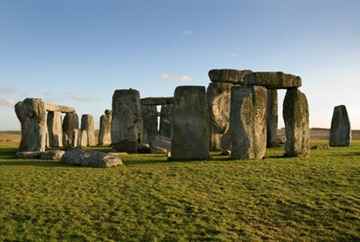 Also – psst – if it really doesn’t tickle your fancy, there’s an even bigger site nearby.
Also – psst – if it really doesn’t tickle your fancy, there’s an even bigger site nearby.
Stonehenge complaints
Complaint number one is that Stonehenge is too small. But it’s hardly the World Heritage-listed site’s fault that expectations can be too large, and, in fact, some stones are 6m high. Okay, you can’t get close enough to touch the stones, but that’s an essential conservation measure. And, yes, there isn’t much of an info centre, but did you really come to see laminated diagrams?
Stonehenge history
Stonehenge is infectiously atmospheric and deeply mysterious. A lot has been written on the subject but there are many things that make Stonehenge special.
It’s at least 5000 years old, begun before the Pyramids were even a twinkle in a narcissistic pharaoh’s eye, and the four-tonne bluestones that make up the structure were transported from south Wales, 240km away – a long way to come without a big lorry.
No one knows why Stonehenge was built, what it was for, or why it was abandoned about 3500 years ago, but the surrounding countryside, which is in a natural depression, is also draped in significance.
There are at least 340 Bronze Age burial mounds or barrows, as well as other earthworks and henges in the area.
Pagans and virgins
Historians argue that the monument was a pagan shrine at which to worship ancestors, gods, or perhaps a calendar or astrological device to mark the solstices.
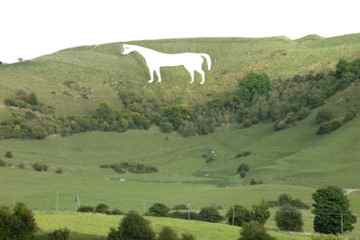 Newer evidence suggests, however, that Stonehenge was a centre of healing, with people coming from as far away as modern Switzerland to seek treatment.
Newer evidence suggests, however, that Stonehenge was a centre of healing, with people coming from as far away as modern Switzerland to seek treatment.
That said, though it’s the most sophisticated and most talked-about stone circle in the world, it isn’t the biggest. That’s just 25km up the road at Avebury, and the hawk-eyed will spot Wiltshire’s White Horse on the way.
Avebury circle
Avebury has a joint World Heritage listing with its more famous neighbour. The world’s largest stone circle is thought to have taken 500 years to build and there were once 99 stones (again, we’re not sure why) though only 27 stand now.
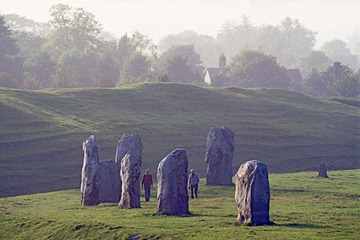 The circle includes similar astronomical and engineering marvels to Stonehenge. The curious Silbury Hill, at 37m the largest manmade mound in Europe (purpose unknown), is nearby, too.
The circle includes similar astronomical and engineering marvels to Stonehenge. The curious Silbury Hill, at 37m the largest manmade mound in Europe (purpose unknown), is nearby, too.
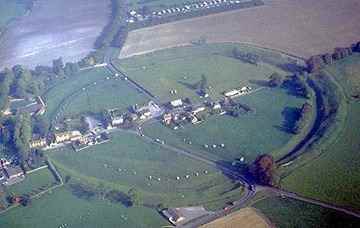 The Avebury stone circle is so large it has a village plonked in it, but the oddity only adds to the charm. You don’t get the goal-style stone arrangements here, but the pay-off is worth it. You can wander freely among the huge stones and up along the 6m-high ditch (you’ve guessed it: purpose unknown), absorbing the pretty setting, the compelling atmosphere and myriad mysteries.
The Avebury stone circle is so large it has a village plonked in it, but the oddity only adds to the charm. You don’t get the goal-style stone arrangements here, but the pay-off is worth it. You can wander freely among the huge stones and up along the 6m-high ditch (you’ve guessed it: purpose unknown), absorbing the pretty setting, the compelling atmosphere and myriad mysteries.
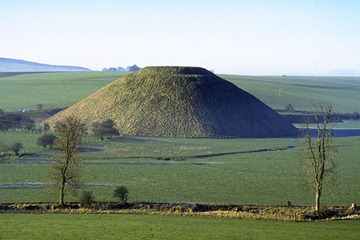 For me, the equal sense of mystery, plus the freedom to wander – and wonder – among the ancient stones, makes Avebury the more satisfying stone circle experience. There should be few complaints about getting well stoned here.
For me, the equal sense of mystery, plus the freedom to wander – and wonder – among the ancient stones, makes Avebury the more satisfying stone circle experience. There should be few complaints about getting well stoned here.
Winter Solstice
Stonehenge is understandably rich in meaning for Pagans, and the Winter Solstice brings large crowds to the site, including Pagans, druids and anyone who fancies watching the magical sunrise above the stones.
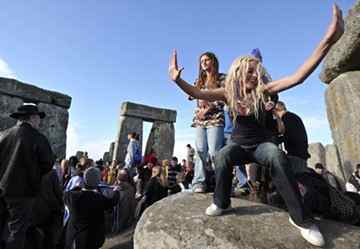 Solstice means ‘sun stands still’ in Latin and refers to the fact that the sun appears to rise and set in the same places for several days. In fact, the Pagan celebration of Winter Solstice is considered one of the oldest winter parties in the world, and is the most important date in Stonehenge’s calendar.
Solstice means ‘sun stands still’ in Latin and refers to the fact that the sun appears to rise and set in the same places for several days. In fact, the Pagan celebration of Winter Solstice is considered one of the oldest winter parties in the world, and is the most important date in Stonehenge’s calendar.
English Heritage is offering free Open Access to Stonehenge for the Winter Solstice from 7.30-9am on Wednesday December 22. Sunrise is expected to take place at 8.09am. Stonehenge’s café will be open from 8am, but there will be no on-site parking available.
Author: Damian Hall | Source: TNT Magazine [November 10, 2010]